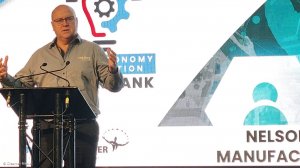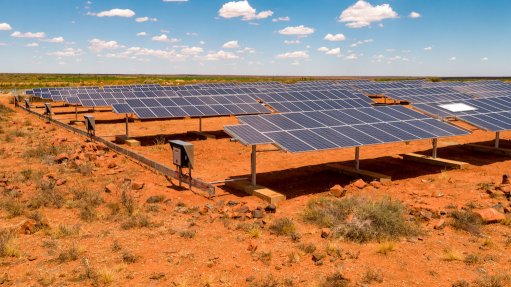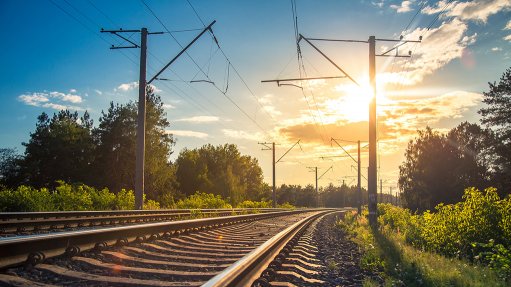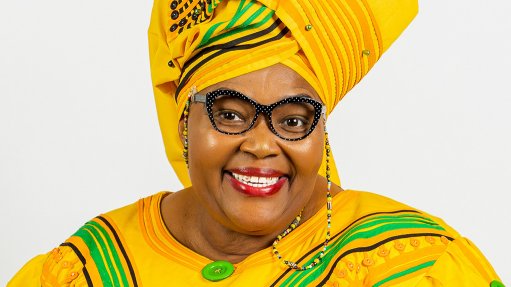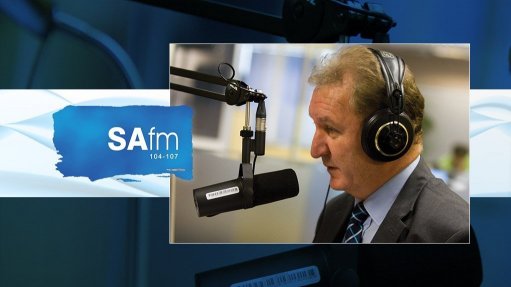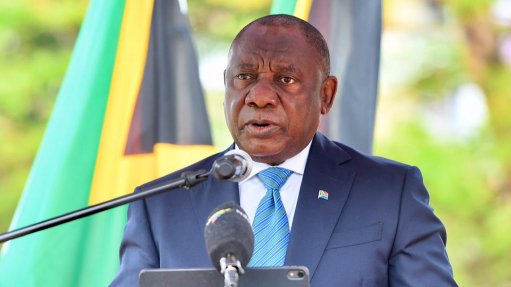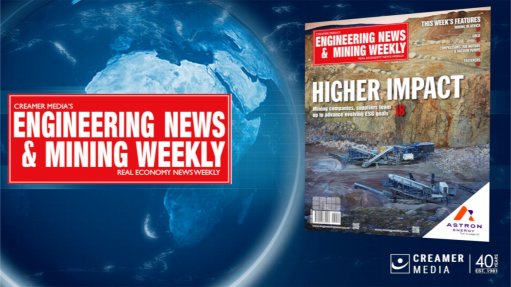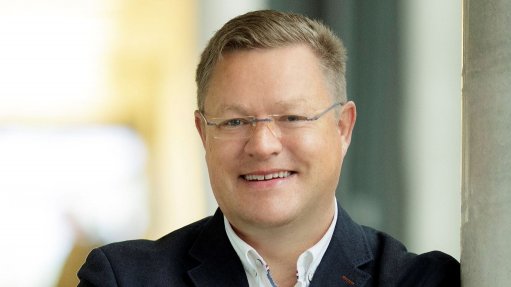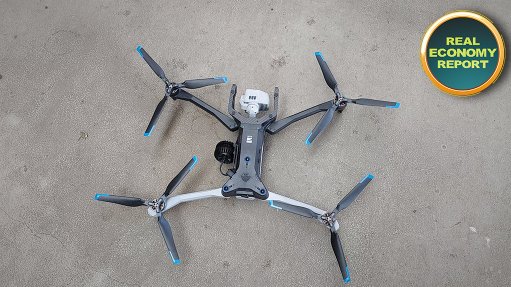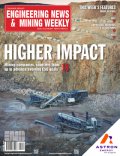Green ammonia ousting coal in power stations, R105bn hydrogen developer reports

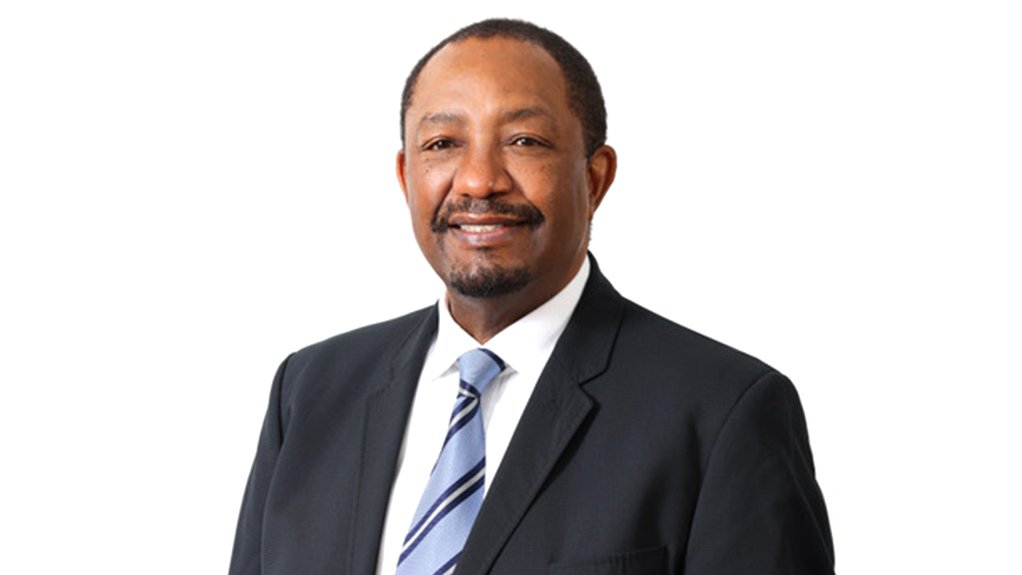
Hive Hydrogen GM Colin Loubser interviewed by Mining Weekly's Martin Creamer. Video: Darlene Creamer.
Hive Hydrogen South Africa chairperson Thulani Gcabashe
JOHANNESBURG (miningweekly.com) – Huge demand for green ammonia from power stations is being seen by the developer of South Africa’s R105-billion green hydrogen to green ammonia project in the Eastern Cape.
But this new development in Europe and the Far East is not going to affect the South African coal industry yet, Hive Hydrogen GM Colin Loubser emphasised in a Zoom interview with Engineering News & Mining Weekly. (Also watch attached Creamer Media video.)
Hive Hydrogen South Africa, chaired by former Eskom CEO and former Standard Bank chairperson Thulani Gcabashe, has progressed from mid-stage to advanced-stage development with Phase 1 of the far-reaching green hydrogen to green ammonia project at the Coega Industrial Development Zone, in Gqeberha, Nelson Mandela Bay.
“This is a really exciting time for us,” Loubser enthused.
With the renewable energy green electron assets proceeding to plan, Hive has completed pre-front end engineering design, or pre-FEED, studies on the green hydrogen molecule portion and has begun the request for information process with all the engineering procurement and construction companies, both global and local.
In addition to maritime market demand burgeoning exponentially for green ammonia to enable unacceptable sea pollution to be brought to an end, the world is seeing an unexpected revolution in the power side.
“We’ve started to see ammonia turbines coming out that are ready for deployment, so we see green ammonia power stations replacing coal-fired power stations and new power station demand for green ammonia, and that’s a really exciting development.
“We spoke recently to a European project that would require all our annual production of green ammonia to fire a green ammonia power station they’re planning. This nascency of the market has started to mature now into an early-stage industry. It’s starting to find traction now in global plans," he said.
The hottest topic at this stage, however, remains how green ammonia is going to reshape the maritime industry in particular.
The maritime business is a heavy polluter of the oceans. The use of heavy fuel oils and diesels not only pollutes the air, but spillages also pollute the water and the sector has major carbonisation issues.
As a consequence, the number of ships that have been commissioned to run on green ammonia as a maritime fuel is increasing exponentially.
"The technology readiness levels of the green ammonia engines for shipping have reached technology readiness level nine, which means they're bankable and high quality,” said Loubser.
Another key advance has been the visit of strategic investors to South Africa. “We’ve had a delegation of 19 people from Japan. We've got a few more delegations coming in from Europe, and potentially from the US as well. The project has a lot of momentum, and it's moving at the right pace, and in the right direction.”
Hive signed a memorandum of cooperation with Itochu in December last year with offtake being spotlighted.
“Almost a daily activity in my life is talking to offtakers. That's going exceptionally well. We're very confident of European and Far East offtake.
“In the next couple of weeks at the most, we’ll see the direction of how contracts will look for Korea and Japan.
“We're also seeing huge shifts in green ammonia demand out of the fertiliser industry in Europe and more and more by industry looking to crack ammonia back to hydrogen.
“We‘re very focused on Japan, Korea and on the green fertiliser industry in Europe. What is exciting for future phases and maybe even a little bit for the first phase of our project is the increase of South Africa's interest in offtake in South Africa. We have to find a balance on that, and have to fit into all the regulatory regimes that Japan and Korea are now implementing, and Europe similarly.
“So, it's really good timing. We’ve anticipated the nascency of the marketplace well, it's now emerging as a proper plan, and, luckily, we think we’ve called it correctly,” Loubser added.
Will funding still be a combination of 70% debt and 30% equity and is the final investment decision (FID) date still expected by the end of next year?
We’re working on a maybe slightly improved 70/30 debt-to-equity component if we can get the developmental funding DFI institutes to do that. The FID date is still on target for the end of next year, so a huge amount of work still to do, a lot of planning processes in the mix, particularly the juggling of the molecule and the electron aspects. We have to make sure we can deliver the electrons for the molecule portion, and some of that goes through a process that takes time. We’ve been extremely encouraged by the way Eskom has been approaching this and how they've worked with us, and the new change from bringing the Ministry of Energy and Minister of Electricity to one portfolio will be a further boost. On July 1, the national transmission company started operating independently from distribution and generation for Eskom, so all the right things are happening for the project from a regulatory and process point of view. The time it takes is also a reflection of the scale and size of the project, but also the internal processes we need to follow, which are pretty standard. South Africa is not putting any obstacles at all in our way.
When will Hive Hydrogen begin building its 3.6 GW of renewable-energy capacity?
It will only start in 2026. We’ve got full environmental approval. We can only start building once we've been through all the processes that allow us to build and that could be expected in early 2026, just after the FID.
How does the 3.6 GW then enable an additional 14.4 GW from other independent power producers (IPPs)?
Our project is injecting power into the grid in the central part of the country, mainly around De Aar and Beaufort West. As a result of what we require, the grid is undergoing strengthening on the published transmission development plan, and then we have some smaller components that we're bringing to bear on the transmission development side that will enable other IPPs to join the grid. What is positive and encouraging is that Eskom is moving forward strongly on their group strengthening, and their buildout plans to enhance and increase the scale of the grid. That's helping us as a project and in a way reducing some of our financial burden. So, everything is being embraced by the government in terms of the hydrogen economy, but also in terms of the electrical requirements, and I think we’ll see more of that over the next few months.
Are you still going all out to produce the lowest cost green ammonia?
Producing the lowest cost green ammonia is the pillar of what we're trying to do. When it comes to government subsidisation, South Africa as a country suffers quite a lot in terms of being disadvantaged over the places like Australia, and the United States where there are subsidy programmes. I think what's happening in places like Australia and America isn't helpful for the developing world. They are subsidising to try and outcompete the developing world. But, having said all that, South Africa has some unique advantages, and can hold its own, particularly because of its good wind and solar, which have a big advantage over some of those other countries. Also, because our very integrated grid is really fit for purpose, particularly for where we are, we see South Africa as staying really competitive over this next period, and hopefully, we’ll see a bit more help and support for developing countries coming out of Europe and the US.
To what extent is Hive Hydrogen’s green hydrogen to green ammonia project aligned to the Just Energy Transition?
That’s absolutely a principal focus of ours. The challenge is we’re not seeing anything happening that’s significant in that area, so we’ve aligned ourselves with the principles of it and are getting on with executing our own form of just energy transition. We'd like to see a lot more activity from the sponsor of that programme. Hopefully will be some good news in the near term coming through with that, but it hasn't worked and hasn't really got momentum yet, so we've got our own momentum and introduce ourselves. We’re talking to the big direct foreign investment agencies, export credit agencies who are very strongly aligned to the Just Energy Transition programme, and the sustainability goals of the United Nations. We've got a third phase of community consultations coming up to try and ensure that we maximize that. Our whole focus is to try and make this a completely independent project in terms of labour. We’d like to get 99% to 100% of all the local components with local labour. We've had people coming out looking to set up factories, we've interviewed various labour unions and labour players in the market, and we have to bring this to bear. South Africa needs this particularly because of its coal problems and trying to transform away from there without affecting the livelihoods of the thousands and millions of people that are dependent on the coal industry. It is something very close to our heart and I think it is something Nelson Mandela Bay has particularly suffered from in the past, so we have to make sure that we produce local jobs to make sure that there are benefits such as electricity and water that flow from the project to disadvantaged communities.
What are the chances of your project sparking a hydrogen valley in that area?
The plan is to get a hydrogen valley going. The natural thing for Nelson Mandela Bay is the automotive industry, and that automotive shift from internal combustion engines running on petrol and diesel into hydrogen is a few years away. It will be after our first phase. But we already see interest in hydrogen fuel cell vehicles and there's an ammonia internal combustion engine that has just been tested, and is working, so that area, too, is inevitably going to come to South Africa, probably starting with bigger vehicles, heavier vehicles, which struggle with batteries, for example, which need to clean up. We have all these challenges with exports out of South Africa now, in terms of using fully decarbonised chains of development, so we see the hydrogen coming inevitably to South Africa, and we know from the Nelson Mandela Bay Business Chamber that there is a huge focus on trying to bring it in and make it the automotive hub for hydrogen in South Africa, at least in potentially exporting further. But there's a lot of development needed. We have to develop pipelines internally. We have to get some internal projects going. There are some mass projects starting to develop in the centre part of the country. but it’s a real game changer for the country in terms of pure alliances and how it decarbonises, but it will take a few more years. The world is in an early stage but South Africa is definitely well positioned to step into that and then take advantage of it.
Comments
Press Office
Announcements
What's On
Subscribe to improve your user experience...
Option 1 (equivalent of R125 a month):
Receive a weekly copy of Creamer Media's Engineering News & Mining Weekly magazine
(print copy for those in South Africa and e-magazine for those outside of South Africa)
Receive daily email newsletters
Access to full search results
Access archive of magazine back copies
Access to Projects in Progress
Access to ONE Research Report of your choice in PDF format
Option 2 (equivalent of R375 a month):
All benefits from Option 1
PLUS
Access to Creamer Media's Research Channel Africa for ALL Research Reports, in PDF format, on various industrial and mining sectors
including Electricity; Water; Energy Transition; Hydrogen; Roads, Rail and Ports; Coal; Gold; Platinum; Battery Metals; etc.
Already a subscriber?
Forgotten your password?
Receive weekly copy of Creamer Media's Engineering News & Mining Weekly magazine (print copy for those in South Africa and e-magazine for those outside of South Africa)
➕
Recieve daily email newsletters
➕
Access to full search results
➕
Access archive of magazine back copies
➕
Access to Projects in Progress
➕
Access to ONE Research Report of your choice in PDF format
RESEARCH CHANNEL AFRICA
R4500 (equivalent of R375 a month)
SUBSCRIBEAll benefits from Option 1
➕
Access to Creamer Media's Research Channel Africa for ALL Research Reports on various industrial and mining sectors, in PDF format, including on:
Electricity
➕
Water
➕
Energy Transition
➕
Hydrogen
➕
Roads, Rail and Ports
➕
Coal
➕
Gold
➕
Platinum
➕
Battery Metals
➕
etc.
Receive all benefits from Option 1 or Option 2 delivered to numerous people at your company
➕
Multiple User names and Passwords for simultaneous log-ins
➕
Intranet integration access to all in your organisation


